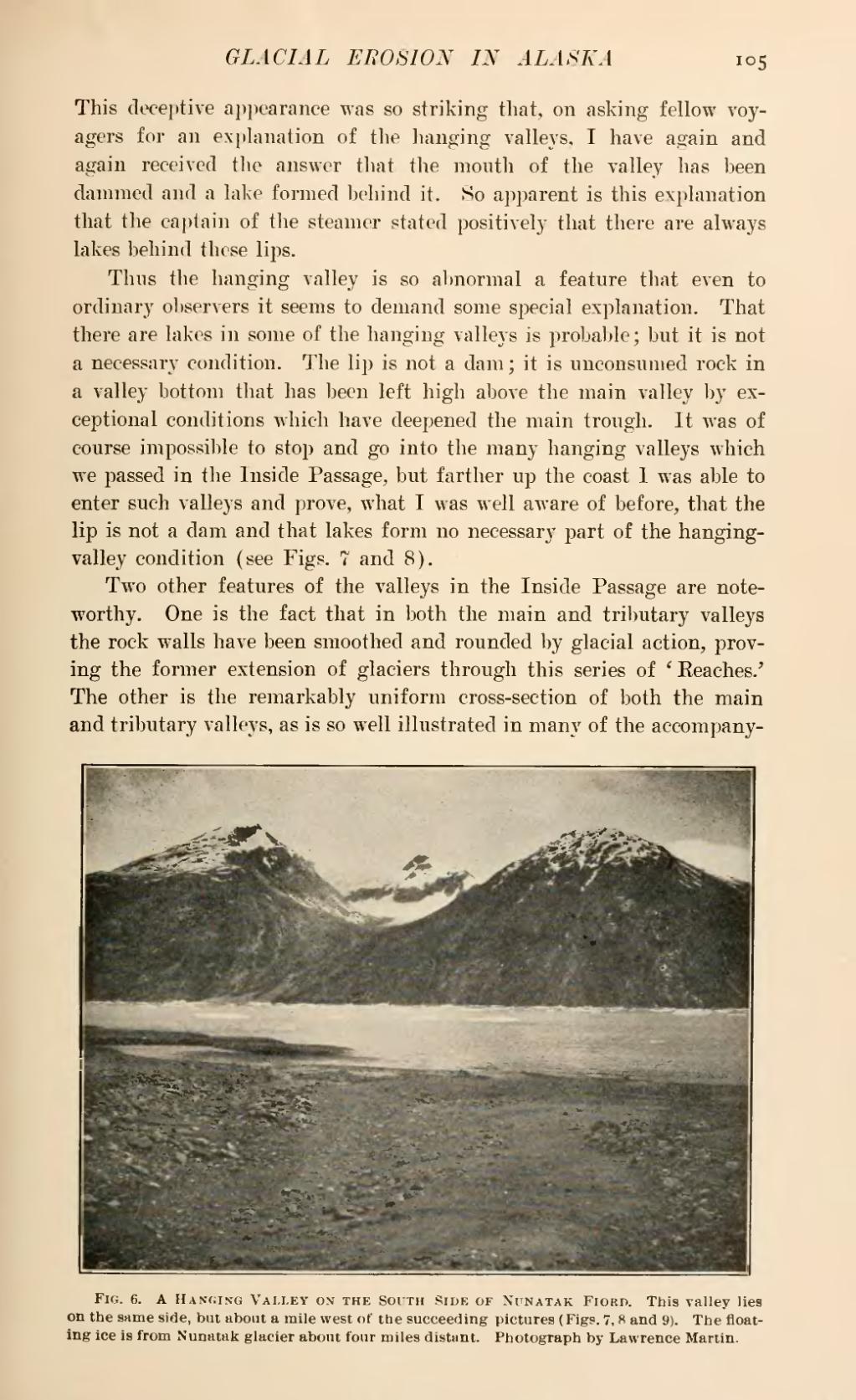This deceptive appearance was so striking that, on asking fellow voyagers for an explanation of the hanging valleys, I have again and again received the answer that the mouth of the valley has been dammed and a lake formed behind it. So apparent is this explanation that the captain of the steamer stated positively that there are always lakes behind these lips.
Thus the hanging valley is so abnormal a feature that even to ordinary observers it seems to demand some special explanation. That there are lakes in some of the hanging valleys is probable; but it is not a necessary condition. The lip is not a dam; it is unconsumed rock in a valley bottom that has been left high above the main valley by exceptional conditions which have deepened the main trough. It was of course impossible to stop and go into the many hanging valleys which we passed in the Inside Passage, but farther up the coast I was able to enter such valleys and prove, what I was well aware of before, that the lip is not a dam and that lakes form no necessary part of the hanging valley condition (see Figs. 7 and 8).
Two other features of the valleys in the Inside Passage are noteworthy. One is the fact that in both the main and tributary valleys the rock walls have been smoothed and rounded by glacial action, proving the former extension of glaciers through this series of 'Reaches.' The other is the remarkably uniform cross-section of both the main and tributary valleys, as is so well illustrated in many of the accompanying
Fig. 6. A Hanging Valley on the South Side of Nunatak Fiord. This valley lies on the same side, but about a mile west of the succeeding pictures (Figs. 7, 8 and 9). The floating ice is from Nunatak glacier about four miles distant. Photograph by Lawrence Martin.

